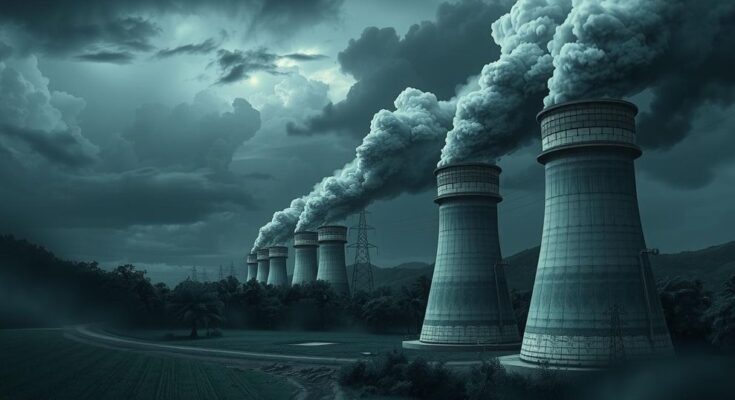Cuba’s energy crisis persists with significant blackouts due to a generation deficit. A reported capacity of 1,610 MW falls short of a 2,000 MW demand, worsening during peak hours. Breakdown of major units and fuel shortages lead to widespread outages, impacting daily life dramatically. Although minor progress was made with the Felton plant returning to service, the government’s response has been inadequate.
Cuba’s energy crisis persists, casting a long shadow over daily life on the island. Recent reports from the Electric Union (UNE) indicate a troubling electrical capacity of just 1,610 megawatts, while the morning demand reached 2,000 megawatts at 7:00 a.m. This gap of 456 megawatts highlights the critical situation facing residents and industries alike. As the UNE’s daily update revealed, peak hours are even worse, anticipating a capacity of 1,745 megawatts versus an expected demand of 3,100 megawatts, creating a staggering deficit of 1,355 megawatts and affecting 1,425 megawatts across the board.
Compounding the issue, outages have left 8 megawatts offline in the Artemisa region following damage from Hurricane Rafael. In total, this energy shortfall has been producing widespread blackouts that have disrupted daily life from 5:34 a.m. through to 12:27 a.m. the following day. The situation peaked with an impact of 1,466 megawatts at 6:10 p.m. yesterday, showcasing the fragility of the electrical network.
Further complicating matters, key power generation units are failing. For instance, Unit 5 at the Mariel power plant and Units 3 and 6 at the Renté facility have been out of commission. Other plants, like Santa Cruz and sites in Cienfuegos and Nuevitas, are currently undergoing maintenance.
Distributed generation is also feeling the strain, with 30 plants offline due to fuel shortages, contributing to an additional 334 megawatts of capacity loss. While some hope rests in the anticipated return of the CDE Moa plant, expected to add 135 megawatts during peak hours, it is clear that the energy crisis remains unresolved.
The situation is increasingly dire due to a mix of natural disasters and underlying systemic problems. As a result, Cubans have come to expect regular blackouts, leaving many wondering if there is ever going to be a resolution. Interestingly, there has been a minor reprieve; the Lidio Ramón Pérez Thermoelectric Power Plant, better known as Felton, has resumed operations. The UNE announced on social media shortly before 7 a.m. on December 6th that Felton had come back online, contributing 220 megawatts to the national grid, which could provide some temporary relief.
Frequently asked questions are popping up about the state of blackouts in Cuba. At the heart of this issue is the fact that insufficient capacity and frequent plant outages lead to daily power interruptions, with critical conditions worsened by problems with fuel availability and damage from weather incidents. The results are evident: everyday activities suffer, food spoils, and damage to appliances accumulates due to these power outages.
Cuban officials have taken some steps to mitigate the crisis, including the integration of certain generation units and the establishment of planned outages under Decree 110. However, widespread dissatisfaction with these measures reflects a continuing struggle, as they seem inadequate to address the glaring issues. Cubans are left grappling with uncertainty and an unstable energy future, prompting calls for a more effective response.
In summary, Cuba’s ongoing energy crisis casts uncertainty on everyday life. With power shortages frequent and no immediate relief in sight, the burden on citizens grows heavier while the government scrambles to respond to legitimate public discontent. Addressing the root causes of the crisis will be vital for alleviating the strain on its populace and restoring hope.
In summary, Cuba continues to face a significant energy crisis marked by persistent blackouts and power generation deficits. With key units failing and the effects of natural disasters compounding the issues, daily life is severely disrupted. Despite minor operational improvements from the Felton power plant, the challenges of insufficient capacity, fuel shortages, and public dissatisfaction remain largely unaddressed. A more robust and effective government response is essential if the situation is to improve and the quality of life for millions affected is to be restored.
Original Source: en.cibercuba.com




